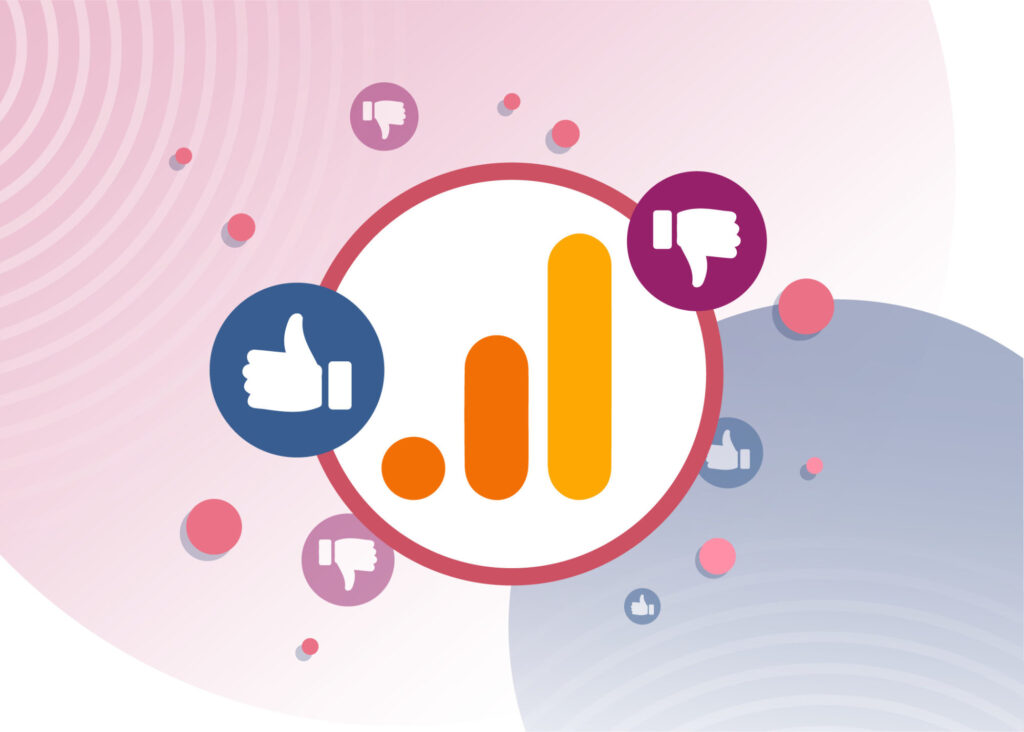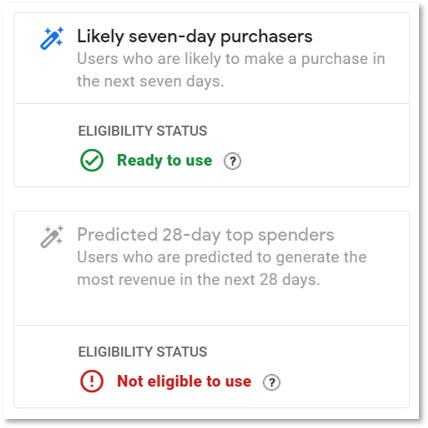30th Jan 2023
Why You Should Be Using the BigQuery Export for GA4
BigQuery has the power to take your reporting to the next level. Here's why!
Google Analytics
21 June 2022
Chris Lewis
A look at the positives and negatives of Google’s newest analytics product.

GA4 (Google’s newest Analytics product) has certainly had a troubled start to life. Critics (including myself) have bemoaned its lack of usability and complex installation; and with good reason .While GA4 is an upgrade in terms of functionality, it marks a clear shift away from the user-friendly interface that made Universal Analytics (UA) such a beloved product.
Like it or not, GA4 will be the default analytics product moving forward. Google recently announced that they will be sunsetting UA in July 2023, and given the reception to GA4 in its first years, I’m sure this announcement was not positively received by many marketers.
It’s not all doom and gloom though. GA4 comes with some notable improvements, which could be transformative for your business’s data collection and reporting. In this article I’ll be unpicking the good and the bad, so you can decide which analytics product to use over the coming months as you transition to a GA4 only world. Spoiler – it’s both!
Gone are the days of having two sources of data for your web traffic and your app traffic. GA4 was built with cross-platform tracking in mind. The new event-based data structure in GA4 is perfect for handling hits from both webpages and applications, and even the terminology used in the platform is more universal to accommodate both types of measurement.
After installing a consistent user ID, you’ll be able to stitch your users’ web and app sessions together, giving you even more insight into user behaviour. If you have significant app traffic, GA4 will definitely be the platform for you.

Many publications and blogs I’ve read have talked about the positives of the new event data model. I’m not so sure. For the everyday drop-in and drop-out analysis that most marketers undertake, the hierarchical structure of event category, action, and label was a simple one to understand.
My major gripe though, is the lack of parameters allowed with the new model. Only 50 event-scoped custom dimensions can be registered in a GA4. While only 20 custom dimension slots were available in UA, the event structure actually allowed you to send unbounded information into the event reports. The new data structure is far more limiting.
It’s now crucial that you map out your analytics solution, so you don’t run out of space in GA. Decide ahead of time which dimensions and metrics you wish to measure, and make sure you aren’t sending any data into GA that is redundant, or not useful for your reporting.
The BigQuery integration for UA would have set you back $150,000 a year – hardly a snip. The same integration for GA4 is now completely free. The BigQuery data warehouse gives you the ability to join your GA data with offline data sources, such as your CRM. If you’re really smart, you could even run your GA data through statistical models, or develop your own attribution method. Whilst complex, the benefit for medium to large organisations is marked.
The in-built reports in GA4 are by far its worst feature. The overwhelming positive of UA were the predefined reports that provided so much value for so little effort. The majority of that reporting has been stripped back, and in its place we have been presented with Analysis Hub. The Analysis Hub allows users to create their own reports, by combining dimensions, metrics and segments in whatever way they wish.
The problem is we used to get 80% of the reports we needed without having to configure them. Now almost every report you want will have to be built from the ground up, which could be a big time sink. Framing this in a more positive light, GA4 forces the user to become more data literate, by making them define their own reports. Maybe this will be a good thing in the long run.
For the day-to-day analytics user, this is the feature to focus on. Firstly, I want to talk about audience triggers. With an audience trigger, you can now fire an analytics event every time a user is added to that audience. This means you can create complex audiences and easily monitor how many people are matching that pattern of behaviour.
Secondly, predictive audiences. Predictive audiences use GAs machine learning to predict the future behaviour of your users. This allows you to create audiences such as ‘Likely 7-day purchasers’ or ‘Likely 7-day churning users’. The latter is particularly important for re-engaging iOS users who might otherwise have their GA cookies wiped from their Safari browser. I envisage that predictive audiences will be a cornerstone of any good remarketing campaign in the years to come. Google’s algorithmic power is getting better all the time, and tapping into it will be key.

I’m a major believer in creating useful views in GA, as they help to keep your data clean and orderly. Well configured Universal Analytics accounts should have a view for reporting, a staging site view, a raw data view, and a test view as a minimum. Views have been totally scrapped in GA4, with the only possible segmentation now coming in the form of web and app data streams. Yet again, the analysis hub must be configured by the user if you wish to simulate views in your reporting.
I won’t go into too much detail on consent mode in this article, but more can be found here.
In essence, consent mode is Google’s privacy feature that helps to eliminate the use of cookies when users do not give explicit consent. With Universal Analytics, any data from non-consenting users is lost, but GA4 ingests this data in the form of anonymised and cookieless pings. This data is then used to model conversions, meaning you can report on all of your user interactions; not just interactions from consenting users.
In a post-GDPR world, we will need to rely on this kind of modelling, and Google’s solution will help to bridge the data gap caused by the increased focus on privacy in recent years.
July 2023 sounds like it might be a while away yet, but it’s crucial that you get GA4 running as soon as possible. There is talk of Universal Analytics properties being deleted six months after this date, so GA4 will be the only place to view historical data. If you wish to have year on year comparisons, you’ll need to get GA4 installed by this July.
GA4 brings some great new features to the table, but is missing some of the best parts of Universal Analytics. In my opinion, the best solution is to run both GA4 and UA in parallel (while you still can), and take the best parts from each. Create your audiences in GA4, make use of the BigQuery integration, but use UA for your day-to-day reporting and analysis. With Google’s recent announcement regarding Universal Analytics, now is definitely the time to start focussing on GA4, but I see no reason why you shouldn’t make the most of UA while it’s still available.
I’ve spent the last few months working with clients on Adobe Analytics. I can tell you that a lot of GA4’s functionality seems to be lifted directly from their playbook. Like Adobe Analytics, GA4 has the potential to be incredibly powerful, but can be a minefield to navigate. Whereas UA was built with the layman in mind, GA4 exists for the professional web analyst, data scientist, or business intelligence unit. If that isn’t you, perhaps you should get in touch!
30th Jan 2023
BigQuery has the power to take your reporting to the next level. Here's why!
29th Jun 2022
The GA conversion import isn't fit for purpose. There's a far better alternative.
27th Jun 2022
GA4's new attribution modelling settings could be transformative for your data. Let's see how!
